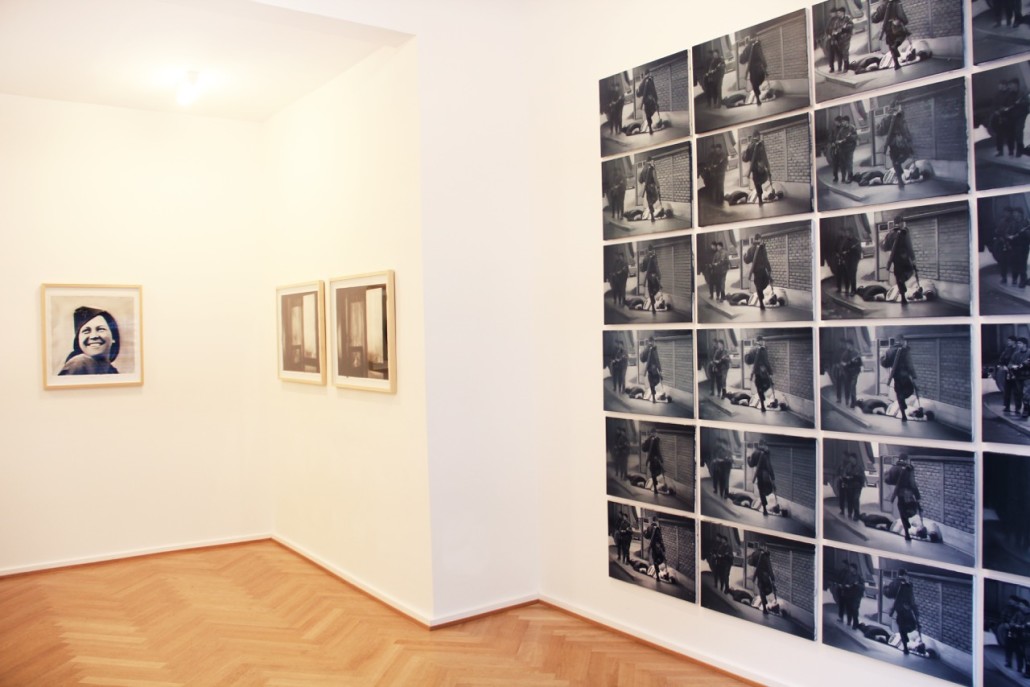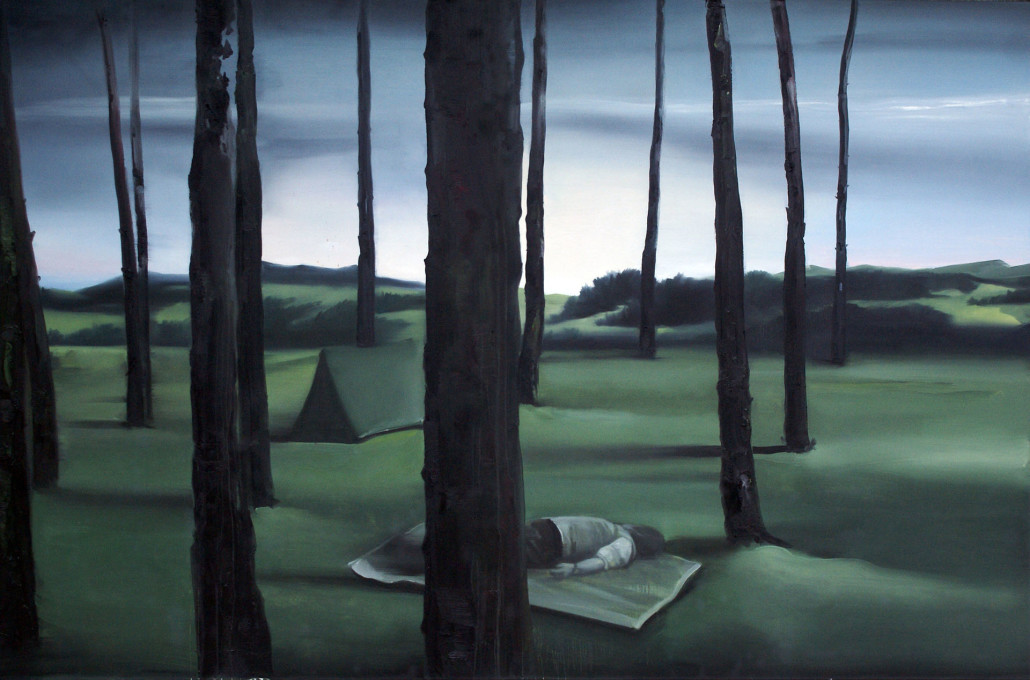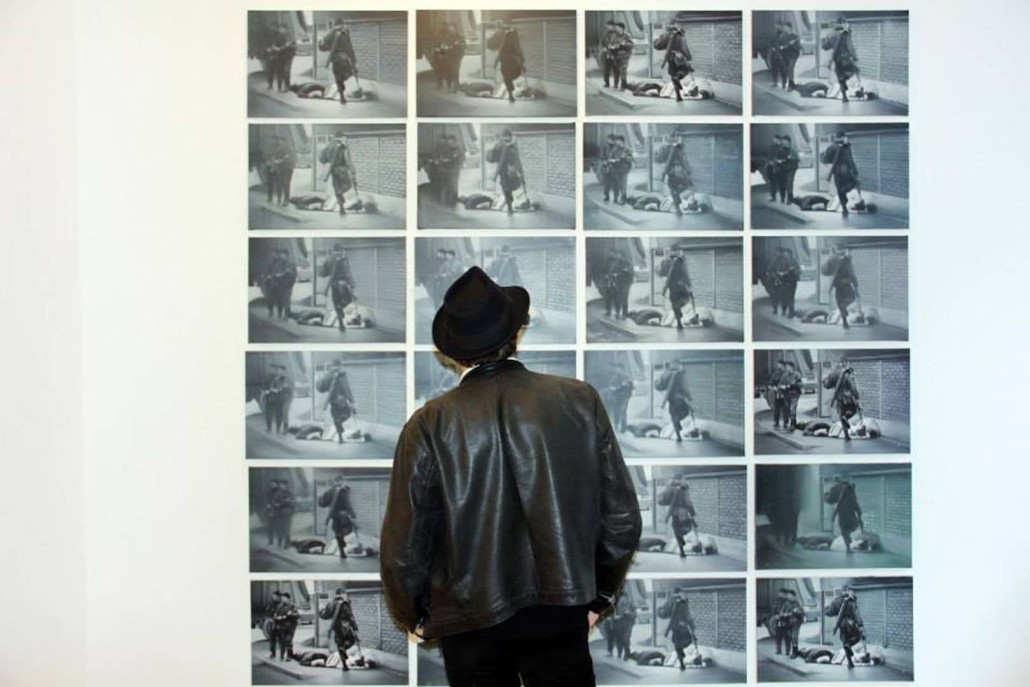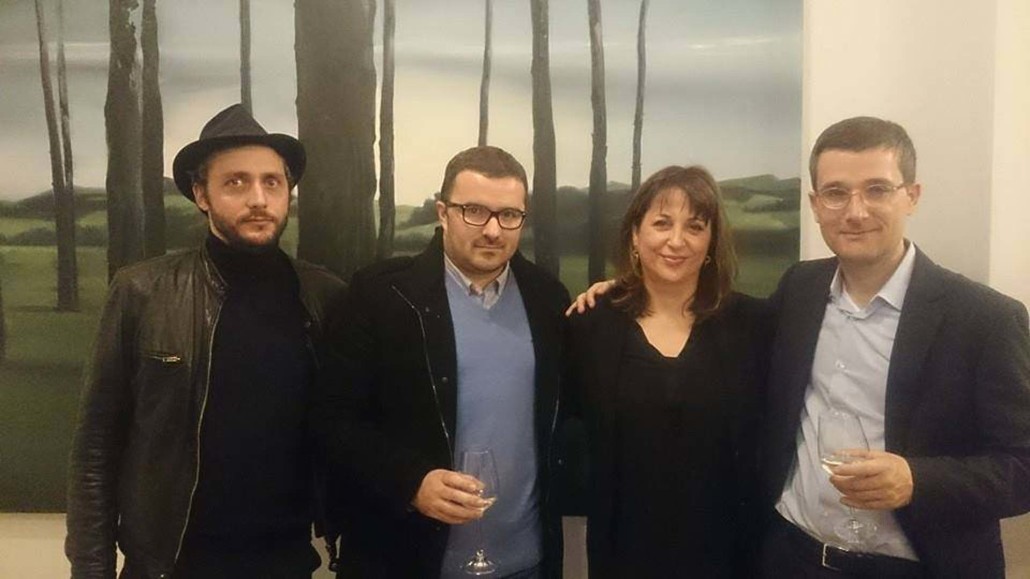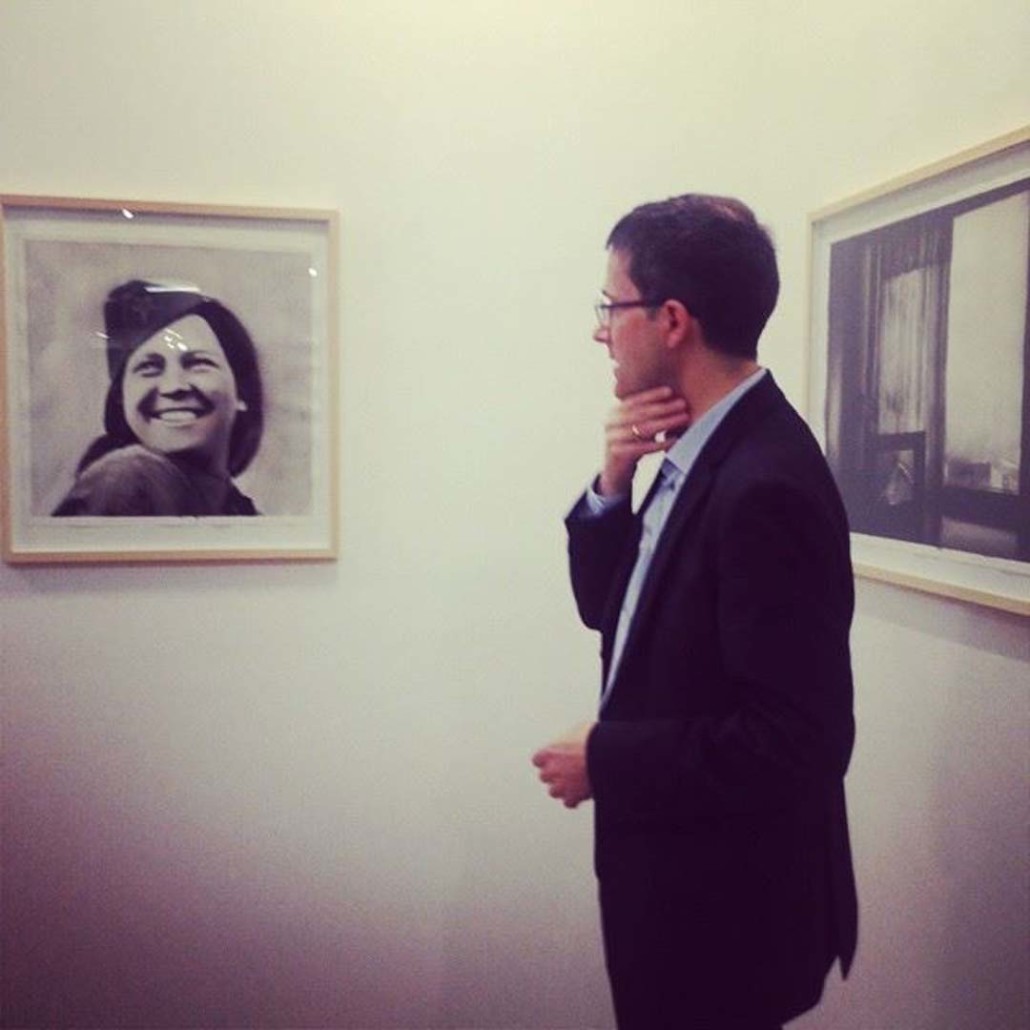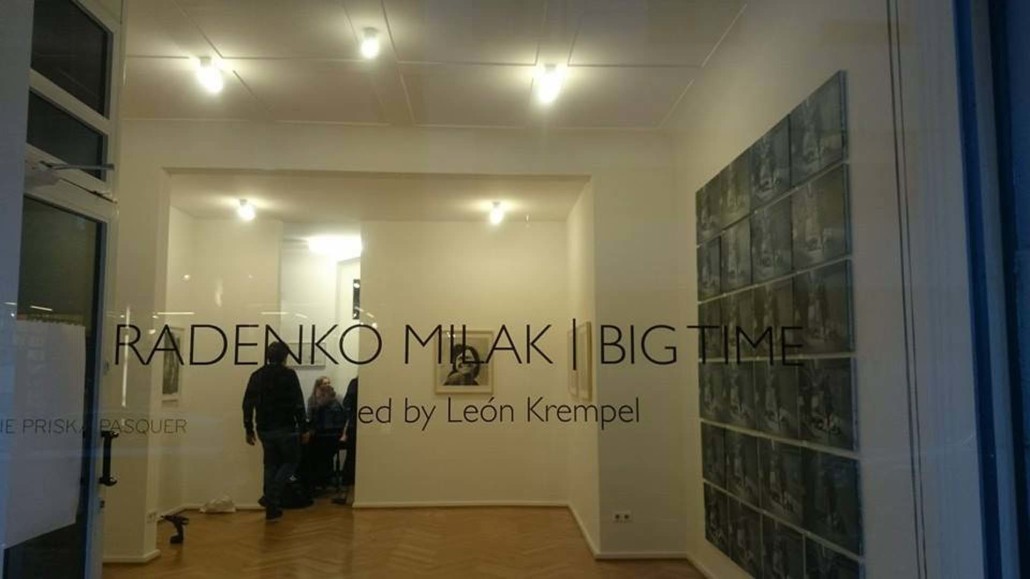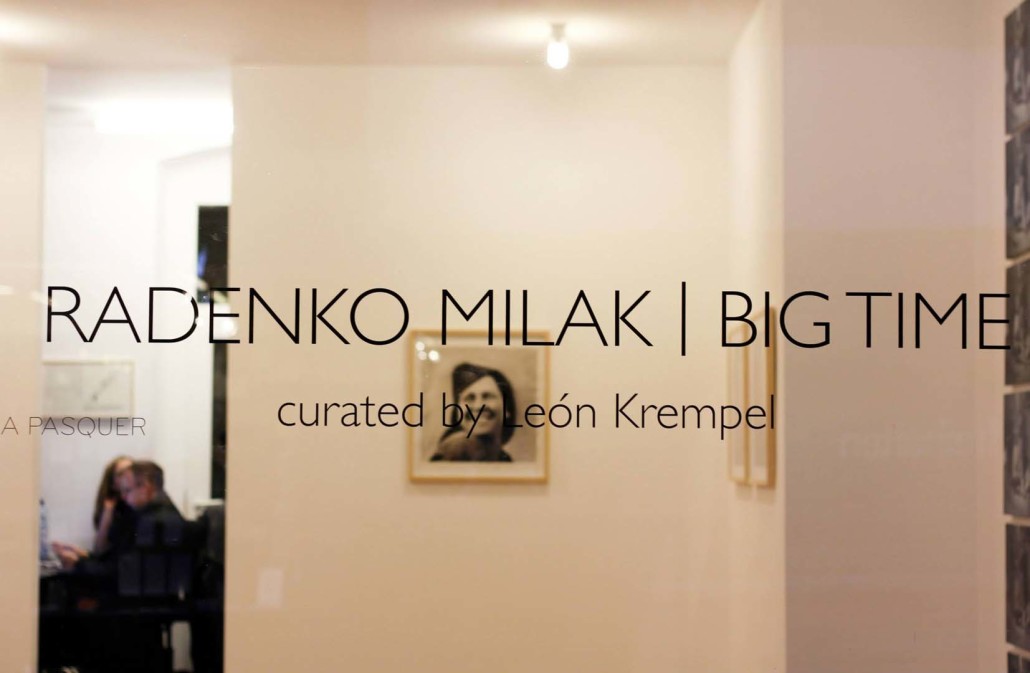BIG TIME
Radenko Milak
curated by León Krempel
November 7th, 2014 – January 3rd, 2015
Radenko Milak (geb. 1980) analysiert die Rolle der zeitgenössischen Bildproduktion bei der Herausbildung unseres historischen und kulturellen Gedächtnisses. Das malerische Werk des bosnischen Künstlers kreist um Fragen der Fixierung und Speicherung des Visuellen sowohl in der persönlichen Erinnerung als auch in der medialen Präsentation durch Film und Foto. In der ersten Einzelausstellung des Künstlers zeigt | PRISKA PASQUER eine repräsentative Auswahl von Werken aus den Jahren 2005 – 2014. Im Zentrum der von León Krempel kuratierten Schau steht die 24-teilige Serie And what else did you see? – I couldn’t see everything (2010-2012).
Malerei, Zeichnung, Aquarell und neuerdings auch Animation sind die bevorzugten Ausdrucksmittel von Radenko Milak. Sein Material findet er in Printmedien und im Internet. In seinen Aquarellen und Ölgemälden transformiert er Vorlagen aus Filmen, Reportagen oder Pressebildern zu kleinen, intimen bildnerischen Szenarien. Diese können beim Betrachter Fakten und Geschichten ins Gedächtnis rufen, aber auch als autonome Bilderzählungen wahrgenommen werden.
Die Serie And what else did you see? – I couldn’t see everything (2010-2012) führt Malerei und Kriegsfotografie zusammen. Sie basiert auf einem Pressefoto, das Ron Haviv 1992 im Bosnienkrieg aufgenommen hat. Die Aufnahme zeigt einen Uniformierten mit Waffe, Sonnenbrille im Haar und Zigarette in der Hand, der im Begriff ist, mit aller Kraft eine mit dem Gesicht auf dem Boden liegende Frau zu treten. Das Foto aus der Blood & Honey: A Balkan War Journal benannten Serie provozierte zahlreiche Kommentare und Diskussionen.
24 Mal hat Milak dieses Motiv als kleine schwarzweiße Ölstudie gemalt. Den Titel entnahm er einem Interview mit dem Fotografen. Dieser hatte auf die Frage eines Journalisten, was er sonst noch gesehen habe, geantwortet: „Ich konnte nicht alles sehen!“ Genau um diese Frage geht es in Milaks malerischen Annäherungen an das Sujet. Denn was genau sieht man auf dem Foto? „Eigentlich sagt uns dieses Foto sehr wenig – allenfalls dies: dass der Krieg die Hölle ist und dass mit Gewehren bewaffnete, schlanke junge Männer imstande sind, dickliche ältere Frauen, die, hilflos oder schon getötet, auf der Straße liegen, gegen den Kopf zu treten.“, kommentierte Susan Sontag die Aussagekraft des Bildes.
In seinen malerischen Variationen umkreist Milak wieder und wieder das vermeintlich eindeutige fotografische Motiv. Er übersetzt das technische Bild in ein handgemachtes und produziert dabei eine unperfekte Ähnlichkeit, die das fehlende Wissen erfahrbar macht. An die Stelle der festen Konturen und präzisen Details treten eine sinnliche Pinselführung, ein introspektiver Blick – und bieten damit eine neue Art und Weise, die übermittelte Information zu verstehen.
Milaks Bilder machen die Mechanismen bewusst, nach denen sich unser historisches und kulturelles Gedächtnis im Medienzeitalter formiert. Dabei widmet er sich nicht nur den großen historisch-politischen Narrativen, sondern auch dem Patchwork persönlicher, populärer Erzählungen. Beispielhaft hierfür ist ein Aquarell aus der Serie Unfinished Stories (2012-13). Das nur mit schwarzem Pigment ausgeführte Bild führt den Betrachter in einen kleinen Raum, unmittelbar vor ein großes, fast die gesamte Bildfläche einnehmendes Fenster. Durch den rechten Flügel blickt man hinaus auf eine verschwommene Stadtlandschaft mit Wohnblocks und angedeuteten Grünflächen, der linke Fensterflügel ist von einem halbtransparenten Vorhang verdeckt. Davor steht schräg ein kleiner eingeschalteter Fernseher. Es ist nicht klar, ob das Aquarell auf einem Filmstill basiert, oder die malerische Umsetzung einer tatsächlich vom Künstler gesehenen Situation ist. Zudem greift die Szene ein klassisches Sujet der Interieurmalerei des 19. Jahrhunderts auf. In diesem zeitgenössischen „Fensterbild“ thematisiert Milak die Befindlichkeit des modernen Individuums und seiner über das Auge geleiteten Beziehung zur Welt da draußen – die über das Fernsehen ohnehin schon gebrochen und in den intimen Raum eingedrungen ist.
RADENKO MILAK
Radenko Milak, geb. 1980 in Travnik, ehem. Jugoslawien, lebt und arbeitet in Banja Luka, Bosnien-Herzegowina. Ausbildung an Akademien in Banja Luka und Belgrad, Gruppenausstellungen u.a. in Paris, München und Wien. Werke in Sammlungen: Kunstsammlung Deutsche Telekom, Agnès B., Paris, Nationalgalerie von Bosnien und Herzegowina, Sarajewo, Museum of Contemporary Art der Republik Srpska in Banja Luca u.a.
Radenko Milak (born 1980) analyses the role of contemporary image production in the formation of our historical and cultural memory. The Bosnian artist’s painting work centres on questions relating to how visual elements are fixed and stored – both in personal memories and as presented in the media of film and photography. In the first individual exhibition dedicated entirely to the artist’s | PRISKA PASQUER will be showcasing a representative selection of works from the period 2005 and 2014. The centrepiece of the exhibition curated by León Krempel is the 24-part series And what else did you see? – I couldn’t see everything (2010-2012).
Paintings, drawings, watercolours and – as of recently – animations are the preferred means of expression employed by Radenko Milak. He finds his material in print media and on the internet. In his watercolours and oil paintings, he transforms templates from films, reports or press images into small, intimate artistic scenarios. These in turn can trigger memories of facts and stories in the minds of the beholder but at the same time can also be seen as autonomous narratives.
The series And what else did you see? – I couldn’t see everything (2010-2012) brings together painting and war photography. It is based on a press photo taken by Ron Haviv in 1992 during the Bosnian War. The shot shows an armed and uniformed soldier, sunglasses perched on top of his head and a cigarette in his hand, who is about to kick with full force a woman lying face-down on the ground. The photo from the series called Blood & Honey: A Balkan War Journal gave rise to extensive comments and discussions.
Milak painted this motif 24 times as a small, black-and-white oil study. The title was taken from an interview with the photographer who, when asked by a journalist what else he saw, answered: “I couldn’t see everything!” This is the precise question that is explored in Milak’s visual approach to the subject matter. What exactly is seen on the photo? Commenting on the significance of the image, Susan Sontag writes: “In fact, the photograph tells us very little – except that war is hell, and that graceful young men with guns are capable of kicking in the head overweight older women lying helpless, or already killed”.
In his painted variations, Milak circles the supposedly unambiguous photographic motif again and again. He translates the technical image into something handmade, thereby producing an imperfect similarity that throws up all its unknown elements. The solid outlines and precise details of the photograph are replaced by sensuous brushwork and an introspective look – thus providing a new way to understand the information that is conveyed.
Milak’s images highlight the mechanisms through which our historic and cultural memory is formed in the media age. In doing so, he not only looks to major historical and political narratives but also draws on a patchwork of personal, popular stories. A prime example of this is a watercolour from the Unfinished Stories series (2012-13). Created only with black pigment, the picture leads the beholder into a small room directly in front of a large window that takes up almost the whole picture. Through the right-hand window casement, one looks out onto a blurred cityscape with apartment blocks and implied green spaces; the left-hand one is covered by a half-transparent curtain. Positioned at an angle in front of this is a small television set that has been turned on. It is not clear whether the watercolour is based on a film still or whether the image recreates a situation actually seen by the artist. The scene also calls to mind a classic subject of 19th century interior painting. In this contemporary “window picture”, Milak explores the state of modern individuals and their relationship, as seen through their eyes, with the outside world – which, through television, has already penetrated their intimate space.
RADENKO MILAK
Radenko Milak, born in 1980 in Travnik in the former Yugoslavia, lives and works in Banja Luka, Bosnia and Herzegovina. Studied at academies in Banja Luka and Belgrade, group exhibitions in Paris, Munich, Vienna, etc. Works included in the following collections: Deutsche Telekom Art Collection; Agnès B., Paris; National Gallery of Bosnia and Herzegovina, Sarajevo; Museum of Contemporary Art of the Republic of Srpska in Banja Luca, etc.

